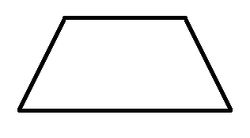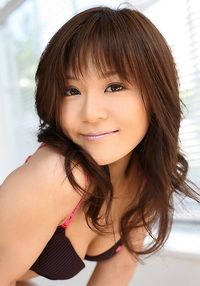Asian Triangle
An Asian Triangle is one of the two basic types of triangles. It is different from most other kinds of triangles in that it has four sides rather than three.
Definition[edit | edit source]
There is nothing in particular that makes the Asian triangle Asian. The name is misleading: in fact, most Asian triangles, along with most other shapes in Euclidean Geometry, lack any nationality at all. They exist as imaginary entities, representative of Geometrical concepts that can only be imitated in the real world. This being the case, a pure Asian triangle is defined as follows:
- It is a closed trilateral
- It has two parallel sides
- Of these parallel sides, one is shorter than the other
- It looks Asian
One notable exception to the rule is the "part-Asian" triangle. The rules describing a part-Asian triangle are:
- It is a closed trilateral
- It has two parallel sides
- Of these parallel sides, one is shorter than the other
- It looks a little Asian
Properties[edit | edit source]
Triangles of the Asian variety are pointy, but not as pointy as other triangles. Pointiness can be measured in units: One unit designates a "pointy" triangle, and one unit a "not" or "non-pointy" triangle. Because of this, Isosceles triangles too can be considered pointy (having one unit) but not Asian, as invariably their offspring will be born with blond hair and fair skin, (while Asian triangles have four sides).
As with all three-sided quadrilaterals, greenness is another factor to take into account: An Asian triangle can be any shade of green, or lack any green thereof. When colored green, an Asian Triangle is referred to as a "Green Asian Triangle". A similar concept can be extrapolated to ideas such as shirts: a shirt that is colored green is often referred to as a "green shirt". While scientists avoid using such terminology (because a shirt is technically not a triangle) this use of the word remains common in colloquial use.
It is important to note that in no case should an Asian triangle have a flat top and glasses, under which circumstances these triangles will often fall under the category of "Urkel", who is not Asian at all.
Mathematical analysis[edit | edit source]
Mathematically speaking, these triangles are often the simplest to deal with, requiring almost zero to no math whatsoever. They do, however, have one quality which can be measured using math: Height. The height of an Asian Triangle can be determined by the formula
<latex>h= \frac{\sqrt{(-a+b+c+d)(a-b+c+d)(a-b+c-d)(a-b-c+d)}}{2|b-a|}</latex>
Where h equals infinity, a equals infinity, and b, c, and d also equal infinity.
Controversy over the use of "Oriental"[edit | edit source]
Until the 1970's, triangles of the Asian variety were referred to as "Oriental Triangles". Though this term is considered derogatory in contemporary times, its use is not entirely unheard of. In 2004, George W. Bush, following a session of doodling during a debate, referred to the shape at the bottom of a rocket he drew as an "Oriental" triangle. The media frenzy that ensued is believed by many to have cost Bush the vote of millions of triangles across the nation. Despite winning the election, a huge rift would continue to exist between his administration and the triangular community during the remainder of his presidency.
In 2009, Mel Gibson was reported to have called the shape of a Vietnamese waiter's apron "Oriental", going on to degrade the shape as the "ugliest of all basic geometric types" and costing the United States millions of dollars each year on healthcare. Gibson was subsequently sentenced to 200 hours of community service and ordered to take classes on racial geometric sensitivity.
Comparison of Asian and Non-Asian Triangles[edit | edit source]
In order to avoid confusing the two, the following list of characteristics can be used to distinguish triangles from Asian triangles.
Non-Asian[edit | edit source]
These include Scalene, Equilateral, and Isosceles triangles. They are:
- Known to populate much of Eastern Asia (Scalene), Europe (Isosceles) or the Caribbean (Equatorial)
- May or may not speak a tonal language
- Are people
- Terrible drivers
- Height is determined by using a tape measure
- Weight is determined using a scale
- Capable of sin
- Consist of three sides, the angles of which add up to 180 degrees
- Know how to peel an orange
- Will tell you the truth
- Saucy
Asian[edit | edit source]
- Only populate imaginary locations, such as Narnia or Babylon
- Communicate through obscene gestures or clicking
- Are not people
- Ok drivers
- Height is determined by the mathematical formula shown above
- Weightless
- Incapable of sin
- Consist of four sides
- If given an orange, will simply drop it on the floor or let it roll down one of its sides
- Are full of bullshit.
- Squeamish
From this, it can be postulated that regular triangles make the better friends.




